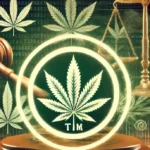Many businesses fall victim to a combination of factors that lead to the necessary decision to file for bankruptcy. However, doing so does not necessarily mean the business completely fails. In certain instances, and with the right attorneys from the Dallas law firm of Ritter Spencer Cheng PLLC, a company may emerge from bankruptcy with a stronger and clearer path to lucrative and lasting success. Specifically, filing for bankruptcy allows a business to reorganize its affairs, debts, and assets to reallocate and restructure the company to make it possible for a business to bounce back. Below we’ve outlined some of the most notable businesses to bounce back from bankruptcy and continue to see success today.
General Motors
General Motors, a multinational vehicle manufacturer, has been designing, developing, and selling vehicle parts for over 100 years. However, at the height of 2008’s economic recession, the company was hit with a debt of more than $30 billion and filed for bankruptcy by July 2009. With a strategic restructuring plan and sufficient funding from the government, General Motors was profitable again in just a few months.
J. Crew
Amidst the turbulent economy of the coronavirus pandemic, J. Crew, a specialty retail company, was one of the first major businesses to file for Chapter 11 bankruptcy in early May of 2020. However, before the end of the year, the business announced its emergence from bankruptcy with a detailed restructuring plan. Under the guidance of professional business law experts, J. Crew is currently positioned for stable and long-term growth.
Six Flags
The national amusement park company, Six Flags, fell victim to heavy debt with no means to pay it back and filed for Chapter 11 bankruptcy in June of 2009. With an effective business refinancing plan, Six Flags turned its ownership over to bondholders and exited bankruptcy under the control of several hedge funds a few months later. By the summer of 2010, the company entered its busiest season with eliminated debt and financial flexibility to restrategize the business.
Texaco
Texaco, an American oil company, filed for one of the largest corporate bankruptcies in history after failing to pay a significant debt that stemmed from damages in a prior merger agreement. The company received a majority endorsement in a vote from shareholders for their proposed reorganization plan. With a new strategy in place for financial success and offering a $3 billion settlement, the company emerged from bankruptcy a little over a year later and eventually became a part of Chevron.
Sbarro
Sbarro, an American quick-serve pizzeria chain, currently operates more than 600 locations across the globe. However, this corporation filed for bankruptcy twice–once in 2011 and again in 2014. Under a robust reorganization plan, assistance from private equity firms, and after ceding ownership to lenders, the company eliminated debt and transformed its business identity to better appeal to today’s consumers for lasting success.
While filing for bankruptcy is a result of unfavorable business circumstances, many times it offers a company a stable and lucrative path to restructure for a profitable future.
Ritter Spencer Cheng PLLC, a Dallas law firm, specializes in business and corporate law. If your business is faced with filing for bankruptcy, our lawyers can produce an effective restructuring and reorganization plan and recommend a strategy to help your company reemerge even after an economic downturn. Learn more about our practice areas and contact our team of commercial business attorneys at Ritter Spencer Cheng PLLC today.







